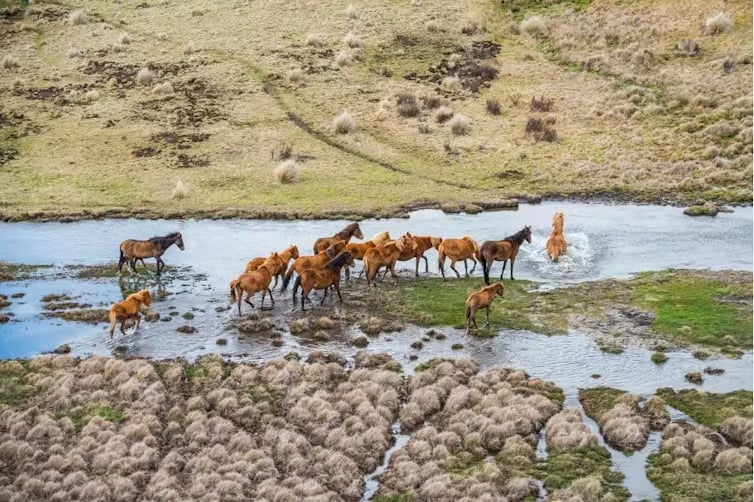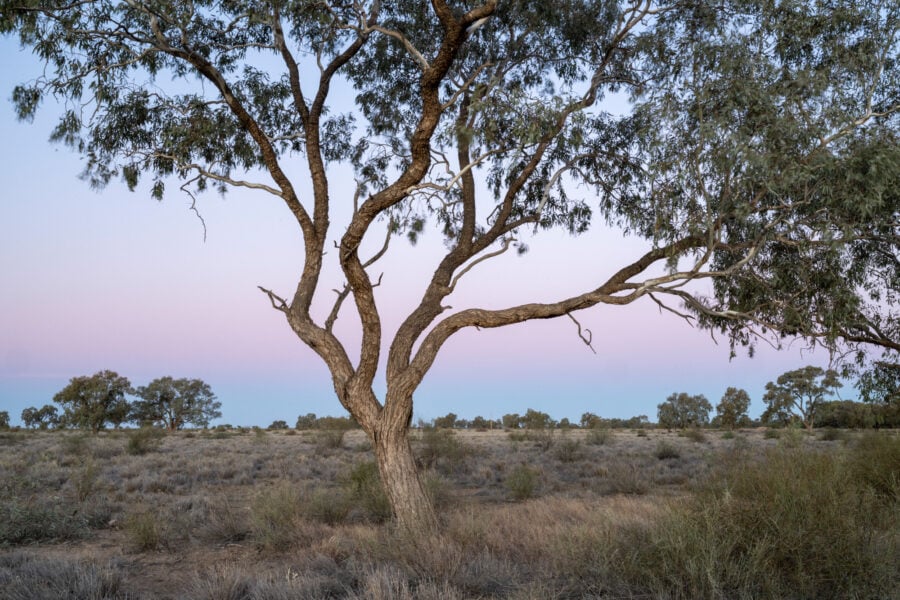On the tiger trail
TIGERS, LIKE WASPS, SNAKES and most other yellow-and-black-striped animals are dangerous beasts. They have killed more people than any other big cat, and it occurs to me, while I’m stealthily stalking one on foot, that this is not the cleverest thing to be doing. I imagine the headline: “Idiot tourist gets eaten while following a tiger deep into the forest.”
The wooden stick wielded by my local guide, Siteram, does little to reassure me as we track the enormous feline. Judging by the prints we’re following, its claws alone look big enough to rip off my face. Nevertheless, we press on through the dry forest of Bardia National Park in the far-western lowlands of Nepal, home to the country’s largest remaining population of Bengal tigers (Panthera tigris).
Nobody knows how many tigers there are in the park because years of insurgency in Nepal have made surveys difficult to carry out. Poaching of this endangered species is widespread, owing to high levels of poverty and lawlessness here. A rhino horn goes for US$50,000 on the open market (although the local scout who secures it will only get US$200), and tiger parts are also highly profitable.
The army, which is supposed to be protecting the animals, is forced to patrol the almost 1000 sq. km park on bicycles because they don’t have the funds to buy fuel for their vehicles.
We pause to examine some recent scat on the path. It’s full of animal fur and bones, and still warm. Then we hear the unmistakable sound of bones being crunched by a hefty jaw. Siteram motions for me to remain still, while he tiptoes forward. I can smell the tiger now; I start to sweat and my knees tremble a little.
Five metres ahead, Siteram silently beckons for me and I will my legs forward towards that terrifying crunching sound. As I round the bush, a dry twig snaps loudly beneath my foot and I catch sight of a blur of powerful movement. With a massive bound, the orange beast leaps away, disappearing deep inside the forest.
It is still warm where he’d been lying, with fresh blood and chewed up deer bones. It takes a while for my heart to return to its usual pace, but it takes longer for the grin to fade.
Going south
That little glimpse leaves me wanting more, so I head south to India, home to 1400 of the world’s remaining wild tigers, which is estimated at less than 2000. Numbers have crashed by 60 per cent during the past decade alone, mainly due to deforestation and human encroachment of their habitat.
It is afternoon, when I reach Kanha National Park in the Indian state of Madhya Pradesh and I go straight out into the heart of it, in a jeep, with my guide Saleem; unlike in Bardia, there’s no walking allowed. We see plenty of animals the moment we enter, including wild boar (tigers’ favourite dinner), barasingha deer (12-horned and found only in Kanha), chital spotted deer (tigers’ other favourite dinner), gaur (massive humped buffalo) and sambar. But no cats.
With deer grazing on the gently rolling grassland and the deciduous forest behind, the place resembles the parkland of a stately English house – except for the monkeys, and, of course, the fact that tigers are out there secretly roaming…
The next day, we rise at dawn and go straight into the forest. Saleem hears from the elephant handlers that a tiger has been spotted near the elephant huts in the jungle. We race out in our Jeep and from there we climb to the safety aboard an elephant for the 400-m journey through the high grass.
And there she is: invisible until you are above her, lying in the grass with two cubs concealed behind. We don’t see the cubs because they are too well hidden, but she appears huge (tigers average 230 kilograms) and relaxed next to a prized boar kill. It is an utterly captivating sight – I can’t draw my eyes from her beautifully painted stripes. But sadly, we can’t sit there on the elephant watching her for the next few days, as I’d have liked, and so we return to camp.
We are almost back, when suddenly, we see an enormous stripy cat walking down the jeep trail towards us. “Tiger!” I whisper-shout, and we brake as it approaches, getting closer and closer. This is one scary feline and beautiful as she is, we feel a teensy bit exposed in our open tin can – tigers can reach speeds of 65 k/hr and can leap 10 m in a single bound.
Saleem reverses and she continues to come at us, walking on as he reverses more. Still she comes, and he reverses again. We gasp, take pictures and gasp some more, adrenaline pumping. Finally she walks off into the forest, leaving us tiger-eyed with wonder.
Kanha is an important ecosystem and the dedication and commitment shown by the forest wardens is impressive. It’s a dangerous place to work and a number of them have horribly mauled faces, heads, and limbs from attacks by bears, tigers and gaurs.
The controlled babysitting of visitors feels a bit tiresome at times – no walking, having to fill in tedious forms every time you want to enter the core zone, etc – especially after the far more relaxed Nepali approach.
But it works: tiger poaching is non-existent in Kanha, according to Saleem, who grew up there and has been a guide for 17 years. Other initiatives have also helped. For example, villagers relocated from the forest have been ‘compensated’ with running water and electricity and biogas (instead of forest logs). And they are financially compensated when their cattle are eaten by tigers, for example, something that doesn’t happen in Bardia.
To save these incredible creatures from extinction, though, will take a more concerted approach.
Gaia Vince is an Australian journalist who is travelling around the world reporting on the effects of climate change and sending regular dispatches to Australian Geographic. She writes for the BBC, New Scientist and The Guardian. Find her blog at wanderinggaia.com.




